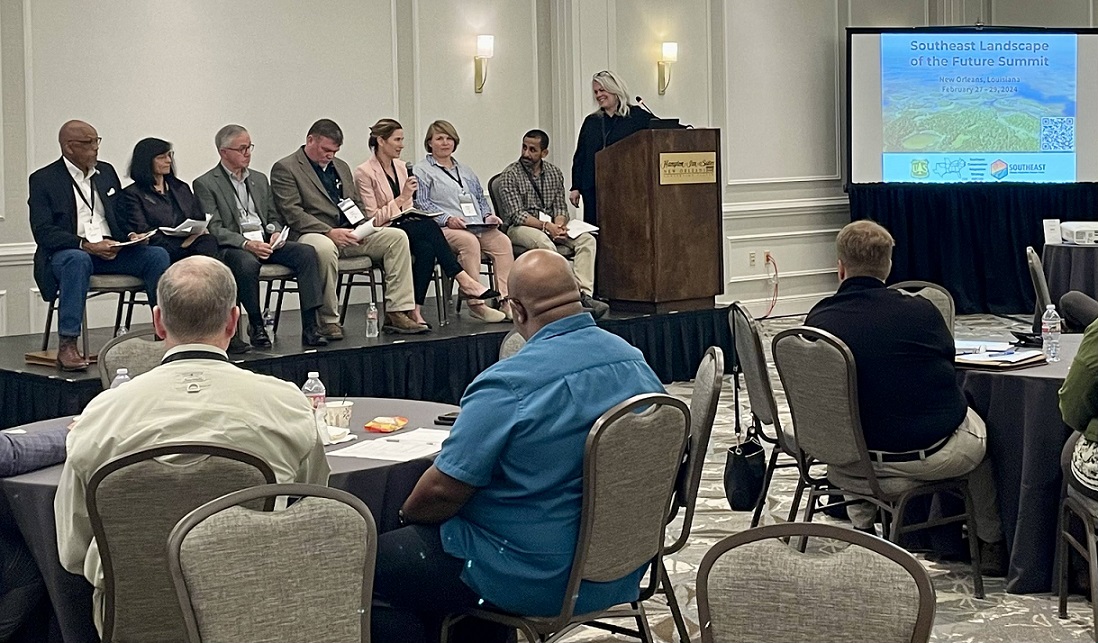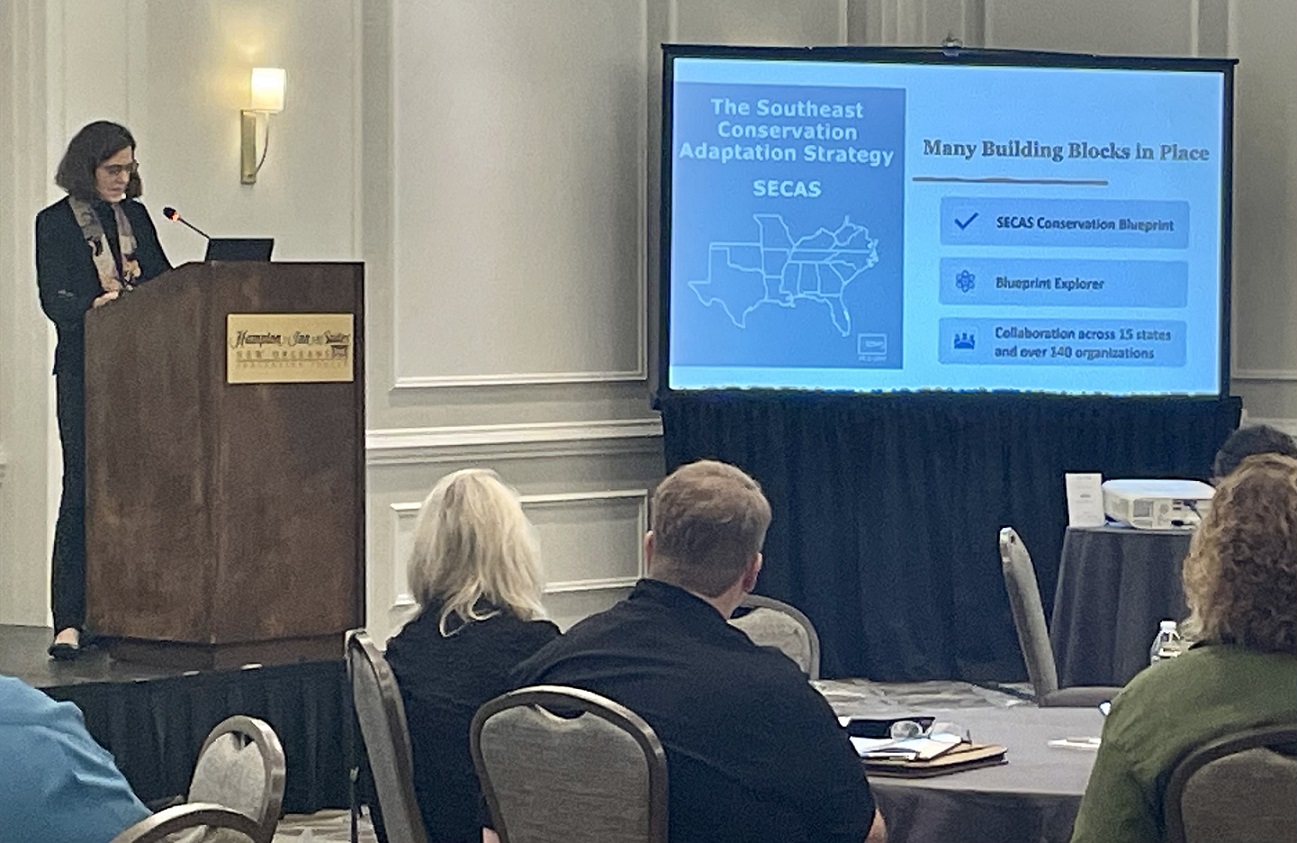The Southeast Summit - Building the landscape of the future together

The Southeast Landscape of the Future Summit (Summit) was held in New Orleans, Louisiana on February 27-29, 2024, under the theme of “Building the Southeast Landscape of the Future.” The Summit was an opportunity for state, federal, Tribal, and other leaders in natural resource conservation to come together to define a shared vision for the Southeast landscape of the future. The Summit was designed to deepen relationships with new and existing peer leadership communities, gain perspectives on critical conservation issues facing the Southeast, and discover where participant priorities intersect across boundaries.
The Summit was an attempt to go beyond the usual conversations that end with various partners calling for landscape-scale, collaborative conservation and thinking. We have had countless meetings over the past decade that end with a call to work together across jurisdictions, at ecologically relevant scales, and in a way that leverages individual organizations’ capacity towards a model of collective action. This meeting, organized by the U.S. Forest Service, SECAS, and the Southeast Climate Adaptation Science Center, was intended to take the next steps. We considered questions like:
- What kind of commitment and accountability do we need to achieve a sustainable Southeastern landscape?
- Will we recognize the Southeast in 100 years?
- Is a backbone organization necessary for success?
- Who is missing from the conversation?
89 leaders and executives from 41 state, federal, Tribal, and private organizations from across the Southeast convened to answer those tough questions and ponder compatible priorities for the Southeast landscape. Understanding that today’s actions will contribute to the landscape one hundred years from now, attendees were asked to contemplate a strategic approach emphasizing broader and deeper collaboration to achieve the desired future. The Summit format involved a combination of panel discussions and breakout sessions to consider collaborative approaches for collective action at regional and local scales. Concluding discussions focused on immediate and long-term actions needed to continue the collaboration and shape the future landscape.
Throughout the three days, participants were inspired by landscape conservation champion Lynn Scarlet (who wrote about her experience with the Summit for the Network for Landscape Conservation, agency and Tribal leaders, and early-career professionals who have exhibited exceptional promise for leadership who served on an Emerging Leaders panel. Joshua Toran III was one of the emerging leaders and you can read his blog from last month.

The Summit overview document outlines the meeting highlights. Participants recognized the need for increased collaboration and communication across jurisdictions and organizations to address complex conservation challenges effectively. They emphasized the importance of inclusivity, particularly in engaging with Indigenous communities and incorporating diverse perspectives broadly into conservation efforts. Additionally, there was a clear consensus on the necessity of adaptive management and continuous learning to navigate uncertainty and evolving landscapes. Key takeaways included:
- Collaboration is essential: Success hinges on cross-sector partnerships, integrating diverse knowledge, including local and indigenous insights.
- Action over planning: Shift focus from continuous planning to implementing tangible conservation actions.
- Commitment to adaptability: Embrace adaptive management to respond to evolving challenges and opportunities in conservation efforts.
- The importance of a backbone organization: A central coordinating entity is crucial for sustaining momentum, facilitating communication, and driving collective action.
- Equity and inclusion matter: Ensuring diverse voices are heard and incorporated into decision-making processes is vital for equitable and effective conservation outcomes.
Participants discussed potential next steps to consider in moving collaboratively toward collective impact. Five recommended next steps were identified for the Summit planning team:
- Continue broadening and building the collective conservation effort toward shaping the Southeast landscape of the future by continuing the coordination function of the Summit planning team
- Create a small and nimble strike team to keep the momentum moving forward
- Alongside long-term planning for the future landscape, take near-term actions to show success during the next 3-5 years
- Identify metrics and key performance indicators to support accountability and strategic decision-making
- Keep the core group of participants from the first Summit involved, but invite other stakeholders to participate as well (e.g., industry, other government, private enterprise)
There will be opportunities to be involved as this effort moves forward in the future. It is our hope that we all can join forces to achieve compatible objectives that collectively and proactively get us closer to the Southeast landscape of the future that we want for our children and grandchildren.